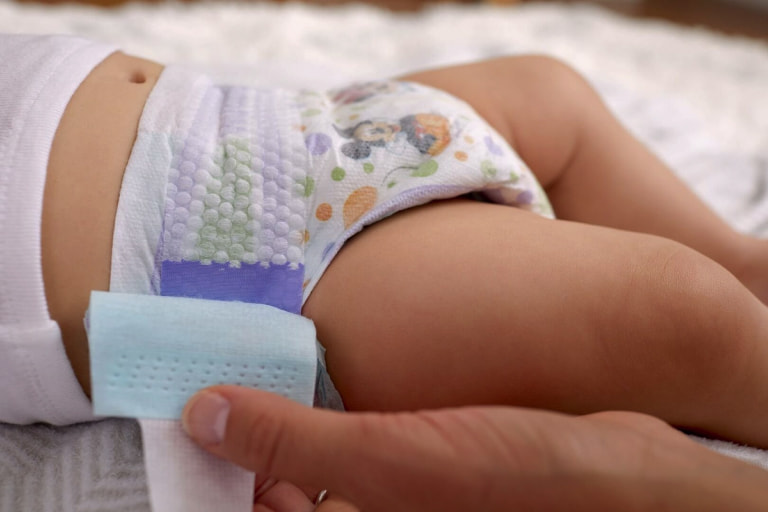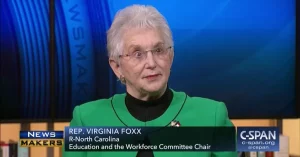By Eric Gardner
In 2022, industry analysts estimate that Americans will purchase about 20 billion disposable diapers. That equates to about $7.2 billion each year. Unfortunately for consumers, two companies — Procter & Gamble (P&G) and Kimberly-Clark — account for 70-80 percent of the market. Despite their different colors and logos, Huggies, Pampers, Pull-Ups, Luvs, All Good and GoodNites are all sold by two companies. Store brands fight over the remaining sales.
While the American market for diapers is vast, it’s not growing. The U.S. birthrate has steadily declined since the mid-2010s, and fewer babies means less parents buying diapers. Thus, any growth in the disposable diaper market must come through price increases or taking market share from a competing brand or company.
In January 2018, that’s exactly what P&G management tried to do. Faced with struggling sales, the company announced price cuts across its entire portfolio, including industry-leading diaper brands Luvs and Pampers. P&G cut prices even though the cost of making each diaper was as high as ever. Parallel to the price cut, the index that tracked the prices of wood pulp, a leading material in disposable diapers, hit the highest level since the Federal Reserve began tracking it in 1926.
The reaction from Wall Street was one of concern. “Your…pricing not keeping up with inflation seems to be kind of the trend now,” a Wall Street analyst told executives shortly after the announcement. “What’s driving that?” he asked. “I mean, is it the retailers especially in the U.S. really pushing back? Is that the consumer saying, ‘Gosh these are commoditized’?”
The question must have stung CEO Jon Moeller. Moeller, who worked his way up the company’s hierarchy since joining in 1988, spent his career ensuring P&G could charge high prices for its products. In industry terms, this was done through premiumization–basically, charging more for a product seen as uniquely valuable. And here, an analyst was suggesting that one of America’s leading diaper companies may be selling commodities. Commodities are the opposite of premium. They’re cheap and don’t earn much profit. “Costs are increasing and they are clearly affecting both our gross margin (and) our bottom line as we outlined,” Moeller acknowledged. But, he said, they “have not increased to the point where typically pricing can be taken and held.” Translation: The low diaper prices would continue, despite rising supply chain costs.
Their approach has changed dramatically in the Covid-19 era. P&G and Kimberly-Clark are facing widespread inflation today, but unlike in 2018, they have substantially increased prices, far beyond the underlying cost increases. The result is a shock for American families’ wallets. In July 2021, Bloomberg reported that the cost of Pampers went from about $25 for 200 to $40 for 168 in just six months. On a per-unit basis, that amounts to a 90% increase, and it’s only climbed higher since. “It just doesn’t make sense that I have to spend so much for less,” a father of three told the reporter.
He’s right. On the surface, the level of the price increase doesn’t make much sense. When the Bloomberg article was published, the wood pulp index stood just three points higher than when P&G cut prices three years before. However, the corporate logic behind the price increases makes perfect sense when you examine the structure of the diaper industry.
Scale Based Cost Advantage
It’s hard to imagine now, but disposable diapers were once a niche item in America. In the 1950s, approximately 80% of homes owned disposable diapers, but they accounted for just 1% of total diaper use. Most households used cloth diapers–which were often ill-fitting and required near-constant laundering. The problem was that there was no easy substitute for American parents. At this time, a handful of pharmaceutical and medical supply manufacturers dominated the industry. Johnson and Johnson, Kendall, Play-tex and Parke-Davis all produced offerings that leaked, were hard to dispose of, and perhaps most importantly, at over 10 cents a diaper, were expensive. There was no real benefit to using the products.
After a decade of research and development by Procter & Gamble, all that changed. Unlike some consumer goods, disposable diapers are incredibly tricky to make well. It requires both technical aptitude to develop absorbable paper and the manufacturing ability to produce a lot of products quickly. P&G had both. The company’s engineers increased absorbency and dropped the per-unit price down to under 5.5 cents a pair — nearly below the cost of cloth. At the time, Time magazine called it “worthy of the creation of a new line of automobiles.”
The result was nothing short of a national revolution in child care. Parents now had access to an affordable product that made life easier, and consumers rewarded Pampers with a staggering 92% of the market. For P&G management, the extra good news was that their company now had what economists call scale-based cost advantage. Essentially, competitors needed to spend a massive amount of money upfront to match P&G’s technological and manufacturing processes. Moreover, even if the competition managed to develop a comparable product, they needed to sell a huge amount to earn a profit. “The next few years saw an industry shakeout,” a trio of business historians wrote in Rising Tide, a history of Procter and Gamble. Faced with competing against a superior product with a scale-based cost advantage, nearly all the established medical supply companies exited the market.
Pampers’ dominance held until 1978, when Kimberly-Clark released Huggies. Armed with a new hourglass shape and a better fastening system, the diaper took nearly a third of the market from P&G. Despite being new to the industry, Kimberly-Clark was not an upstart company. It was a multi-billion dollar international paper company founded in 1872. For management at Kimberly, the risk associated with a scale-based cost advantage didn’t completely apply. It had over a century of paper manufacturing experience and heavy cash reserves. The market settled into a duopoly system. Then, like today, lack of competition enabled both companies to enjoy monopoly level profits. It lasted for over a decade until two brave upstarts entered the industry. The market leaders responded with collusion and predatory behavior.
Colluding To Avoid Competition
Despite different origin stories, Paragon Trade Brands and Drypers entered the disposable diaper market at about the same time, with about the same strategy. Paragon Trade Brands started as the consumer-facing subsidiary of industrial logging giant Weyerhaeuser. Drypers was the brainchild of ex-P&G employees who decided to roll up several regional diaper manufacturers under one national brand. Management at both companies followed a similar business model.
By the early 1990s, disposable diapers were no longer the technical innovations they were when Time compared Pampers to the automobile. Paragon and Drypers decided to cut back on innovation and sell mid-tier diapers at a low cost. They would treat diapers more like commodities than premium products. “The big companies have to do ads that educate the consumer about new products and product features.” Drypers management told the New York Times in 1995. Neither Paragon or Drypers would. Instead, both would maintain respectable margins by limiting advertising and streamlining production. Paragon accomplished this by selling under retailer brands and Dryper under its own. At the two companies’ peaks, they would combine to control a quarter of the multi-billion dollar disposable diaper market. Both had enough financial success that the companies entered the public markets to fund expansion.
In 1993 P&G reacted to the competition. Management slashed prices across its diaper portfolio and Kimberly-Clark followed suit shortly after. At the same time, the cost of wood pulp skyrocketed over 50%, reaching almost $1,000 per metric ton in October. The two mid-tier upstarts entered a price war against two industry giants while inflation ran through the industry. Both Paragon and Drypers were forced to shut down production facilities to stem rising losses. “When a giant like Procter decides not to make any money, there is only so much you can do,” Dryper’s Chairman Walter Klemp told Texas Monthly.
As the conglomerates weakened Paragon and Drypers with a predatory price war, the true battle was fought in the courts. Throughout their evolution, the U.S. Patent office awarded the disposable diaper industry over 1,000 patents. In the 1980s, Kimberly-Clark and P&G were caught in litigation around who owned which. In 1992, three days before the trial, the companies decided it was better to collude than to compete. P&G would pay Kimberly-Clark’s legal bills, and in exchange, both companies would share the patents. “As a result,” the Wall Street Journal reported in 1999, “nearly every time a consumer picks up a $14 package of discount or store-brand diapers, P&G and Kimberly pocket as much as 25 cents each.” To add insult to injury, since the patents are shared, competitors pay royalties to each company. The Journal continued, “Diaper makers that have licensed the technology from both P&G and Kimberly could face combined royalty bills totaling nearly half their profit margins.”
After the agreement, Kimberly-Clark and Procter and Gamble divided and conquered the competition. Kimberly sued and then settled with Drypers Corporation. P&G targeted Paragon, who unlike Dryper, did not settle. After years of litigation, Paragon was found guilty of patent infringement and ordered to pay upwards of $200 million in royalties. Days later, Paragon Trade Brands filed for bankruptcy protection. In 1999, five years after the original patent royalty settlement, Drypers followed. Media reports cited high litigation costs surrounding patents. In less than a decade, P&G and Kimberly-Clark bankrupted two profitable competitors through collusion and predatory pricing.
Perception Is Everything
In June 2022, a box of 168 Pampers cost around $60 at Walmart. That’s nearly 184% more per unit than the price Bloomberg reported in November 2020. The Federal Reserve’s wood pulp index currently stands just 5% higher than when P&G started a price war in January 2018.
There are two key differences between today and previous eras. First, unlike the 1990s, there is no competition in the middle-class of the market to ensure reasonable prices for consumers. Drypers and Paragon are both gone. The only recent new entrants into the industry manufacture luxury diapers. There’s limited risk that P&G or Kimberly-Clark will institute a price war to gain sales.
Second, manufacturers are seeing increases for nearly all diaper components at the same time. Labor and transportation prices are up. The cost of acrylic acid, a chemical that gives diapers their absorbent properties, skyrocketed when the Texas energy crisis knocked the supply off-line. Input prices are up across the board, but the timing of their increase may be more explanatory.
In America, manufacturers don’t control the shelf price for their products. They have influence, but retailers don’t always pass price decreases or increases to consumers. There are countless examples of manufacturers dropping prices to expand market share, only for retailers to pad their pockets. It is the job of a company’s sales team to convince the retailer that a price increase is good for both parties.
This is a tough job, because retailers typically want low prices. But it becomes significantly easier when widespread inflation happens all at once. “This may sound strange,” CEO Jon Moeller told an industry audience in the summer of 2018, “but as a manufacturer, you want them to go to whatever price they’re going to go to quickly. It stimulates activity in the part of both branded and private label manufacturers.” In essence, widespread inflation gave manufacturers everywhere cover to push price increases on to consumers.
P&G and Kimberly Clark seemed to openly communicate the process. On March, 31, 2021, Kimberly announced a price increase through a press release. Less than a month later, P&G followed. The company has over 65 brands that generate more than $76 billion in sales every year. P&G only announced price increases in categories where it competes with Kimberly Clark. During the reveal, an analyst remarked that the company was “seemingly following Kimberly’s pricing announcement.” P&G management responded by saying it couldn’t discuss specifics.
Profit Margins Spike
Without detailed private financial data it’s impossible to definitively declare a company is price gouging. There are simply too many unknowns. However, the publicly available data offers some direction. In 1995, during the price war era, the Kimberly-Clark division that includes diapers earned $1.14 on every dollar it spent. That amounted to a profit margin of 14%. Today, with limited competition, that same division routinely captures profit margins above 20%.
In 2014, P&G management combined its Baby (Pampers), Feminine (Always) and Family (Bounty and Charmin) businesses into one group for financial purposes. That year, after accounting for all expenses and taxes, the group registered a 14% margin. This profit level held relatively constant until 2018–at the same time P&G reduced diaper prices–when it dropped to 12%. In 2020, the year COVID upended the nation and sent nearly all prices skyrocketing, the segment earned 19% margins. P&G repeated the feat in 2021. In absolute terms, that’s around $500 million of extra profit per year for P&G during the Covid-era.
When asked to comment about potential collusion, historical predatory behavior and margin expansion during COVID-19, P&G management had the following response: “We don’t have comment for your story.”



